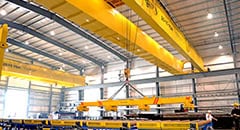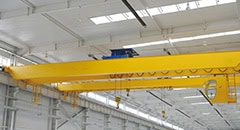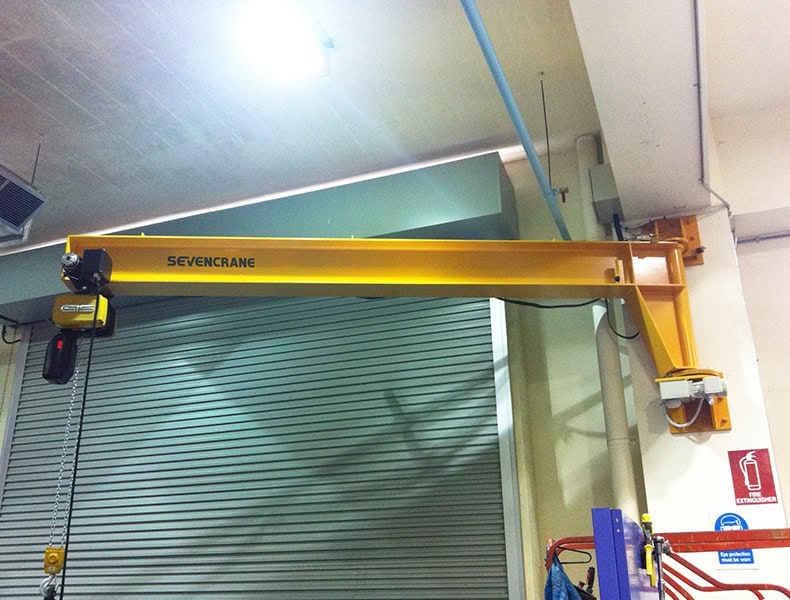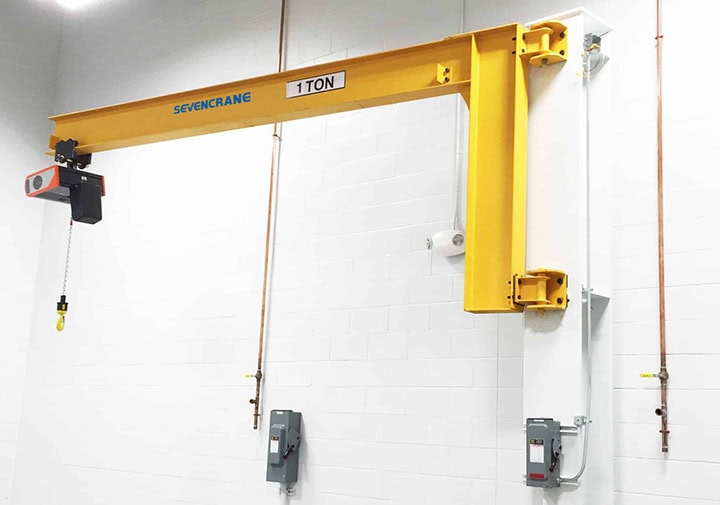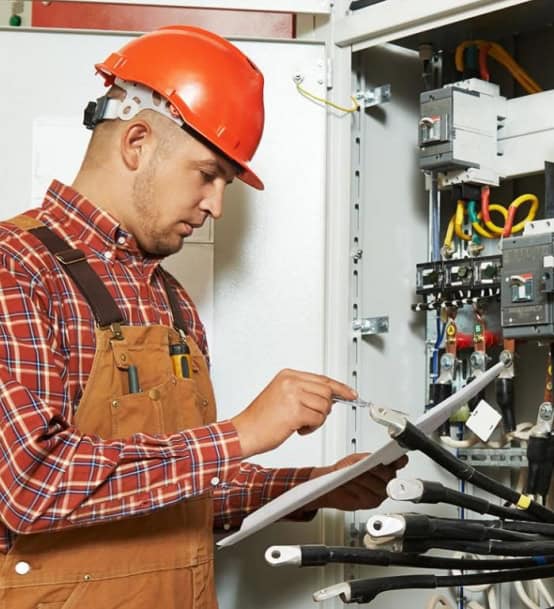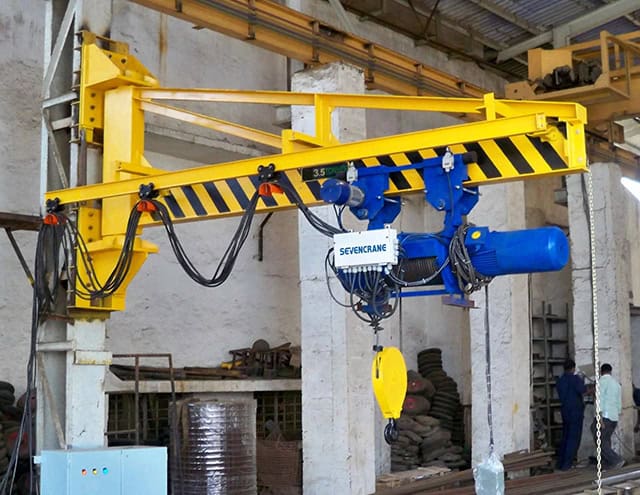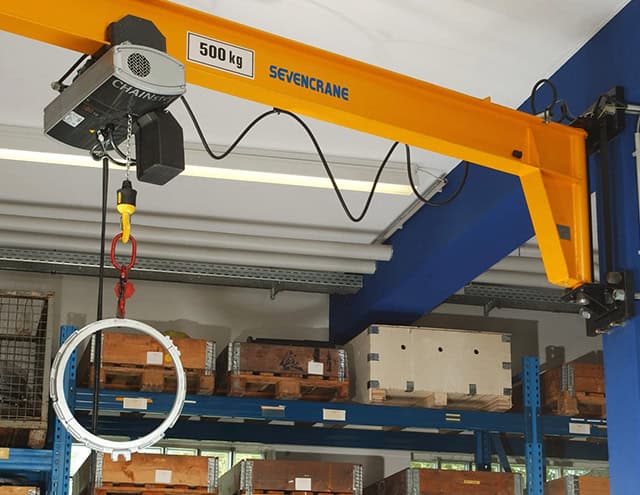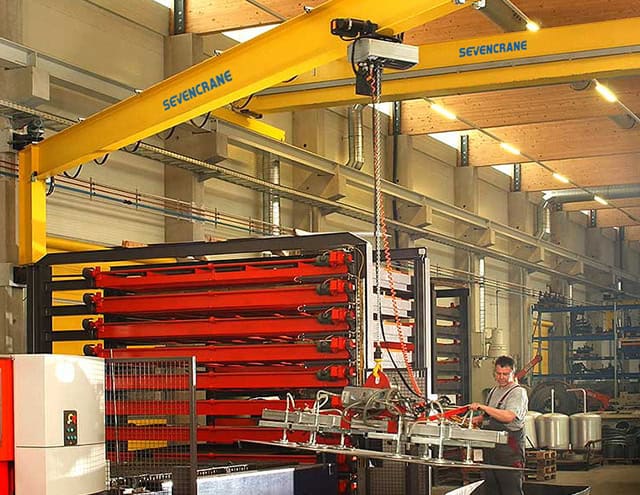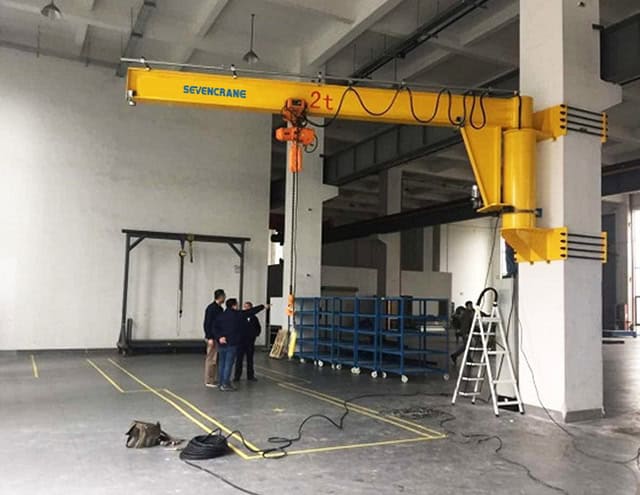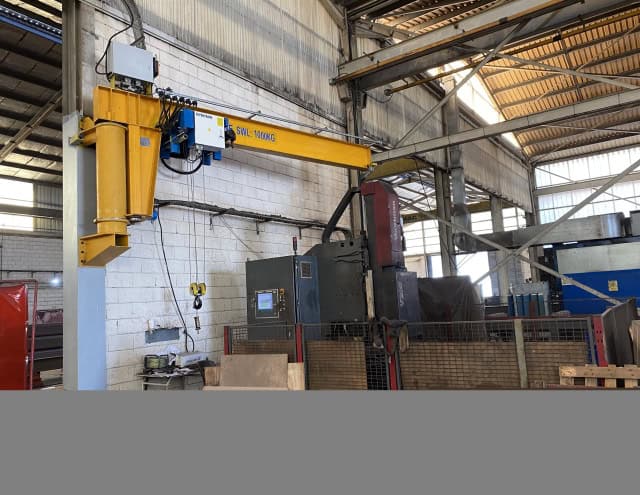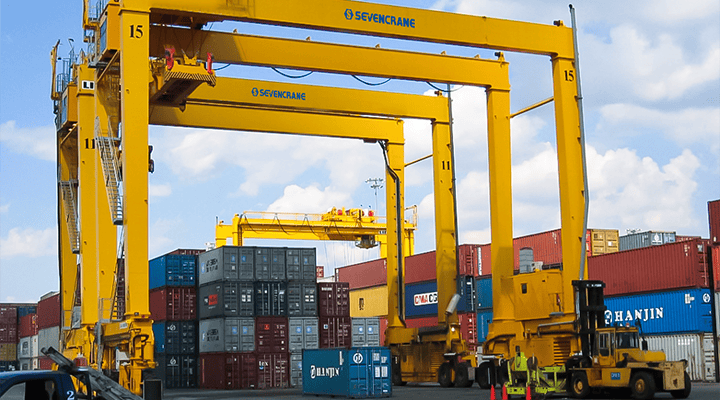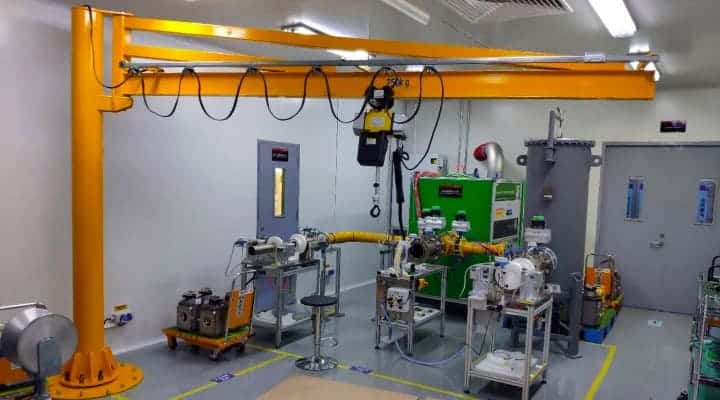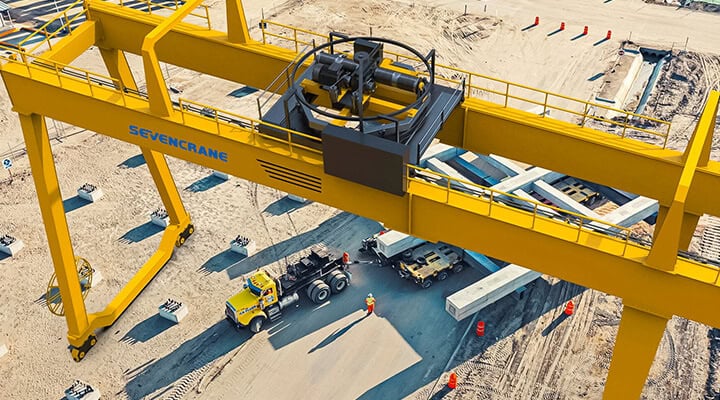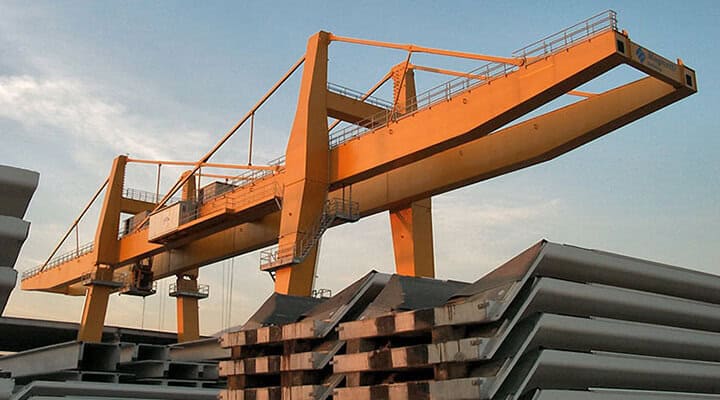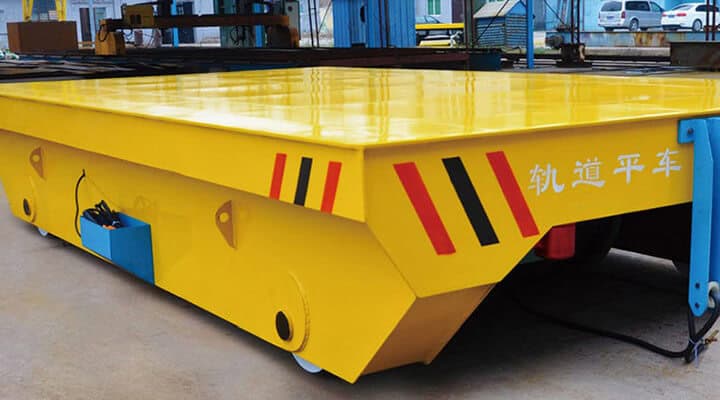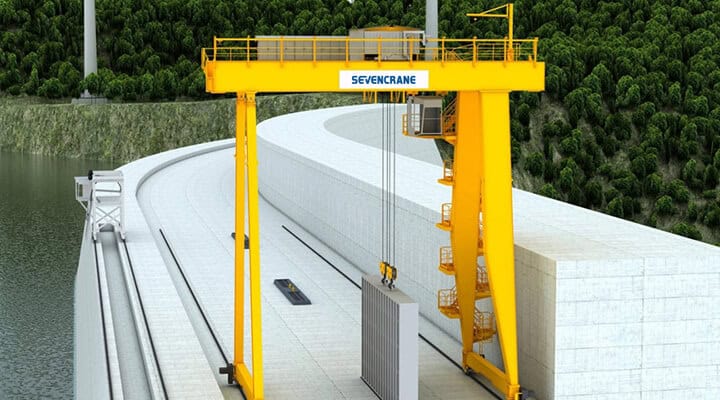Introduction
▶A wall-mounted jib crane is a type of crane that is installed on a wall or a vertical surface rather than being supported by a freestanding structure or column. It is designed to provide a lifting and material handling solution in areas where floor space is limited or where a freestanding crane is not feasible. The wall mounted jib crane consists of a horizontal boom or arm that is attached to a pivoting bracket or wall bracket. The bracket is securely mounted to a wall or a vertical support structure, providing stability and support for the crane. The boom is capable of rotating either manually or with the assistance of a motorized rotation mechanism.
▶The lifting capacity of wall mounted jib crane is determined by its design and the materials used in its construction. Wall-mounted jib cranes are available in various load capacities, ranging from a few hundred pounds to several tons, depending on the specific model and manufacturer. One of the main advantages of a wall-mounted jib crane is its space-saving design. By mounting the crane on a wall, it eliminates the need for a freestanding support structure, which can take up valuable floor space. This makes wall-mounted jib cranes particularly useful in workshops, manufacturing facilities, or warehouses with limited space.
Understanding the Structure of a Wall-Mounted Jib Crane
✦A wall-mounted jib crane consists of a rotating jib arm that is anchored to a building’s wall or structural column, providing a compact and efficient lifting solution for limited space environments. The key components of the crane include the mast (fixed to the wall), the jib arm (which extends horizontally to support the hoisting mechanism), and the hoist trolley that moves along the jib arm to lift and position loads.
✦The crane’s structure is designed to maximize workspace while utilizing the existing wall or column as support, eliminating the need for floor-mounted supports. This makes it ideal for use in tight or congested areas where floor space is at a premium. The rotation of the jib arm is typically less than 360 degrees to ensure stability and avoid over-rotation, making it suitable for specific lifting tasks within a designated work area.
✦Wall-mounted jib cranes are known for their simple and robust design, easy installation, and flexibility in applications like assembly lines, workshops, or warehouses where quick and efficient material handling is required.
Features
- Space-Saving Design
Mounted directly to the wall or column, this crane eliminates the need for floor space, making it ideal for tight working environments.
- Limited Rotation
The jib arm typically offers 180°or 270°rotation, providing flexible coverage of the work area while maintaining space efficiency. Full 360°rotation is often not possible due to structural and space constraints.
- Easy Installation
The crane can be quickly installed without the need for a complex foundation, making it a cost-effective option for upgrading or expanding lifting capabilities in existing facilities.
- Light to Medium-Duty Loads
Suitable for handling light to medium loads, it is ideal for applications like material handling, assembly, and maintenance.
- Durability
Constructed from high-strength steel (Q235B or Q355B), it is designed for long-lasting durability in industrial environments.
- Hoist Compatibility
Designed to work seamlessly with electric chain hoists or wire rope hoists, providing smooth and reliable lifting performance.
- Low Maintenance
The wall-mounted jib crane requires minimal maintenance, ensuring long-term operational efficiency and low operating costs.
Wall mounted jib cranes can use either electric wire rope hoists or electric chain hoists as their lifting mechanism. Below is a comparison between wire rope hoists and chain hoists.
Application and Environment: The choice between chain hoists and wire rope hoists depends on what and where you’ll be lifting. Chain hoists are suitable for lighter loads and versatile environments, while wire rope hoists handle heavy, continuous loads and harsh conditions.
Duty Rating and Capacity: Ensure the hoist’s duty rating and capacity match your operational needs. Chain hoists are ideal for lighter, frequent lifting, whereas wire rope hoists are designed for heavier, less frequent loads.
Maintenance and Versatility: Chain hoists are easier to maintain and can replace manual lifting in various settings, whereas wire rope hoists offer precise positioning for long-duration lifts.
Budget Considerations: While chain hoists are generally more cost-effective and easier to install, wire rope hoists, though more expensive, are necessary for lifting heavier loads safely.

